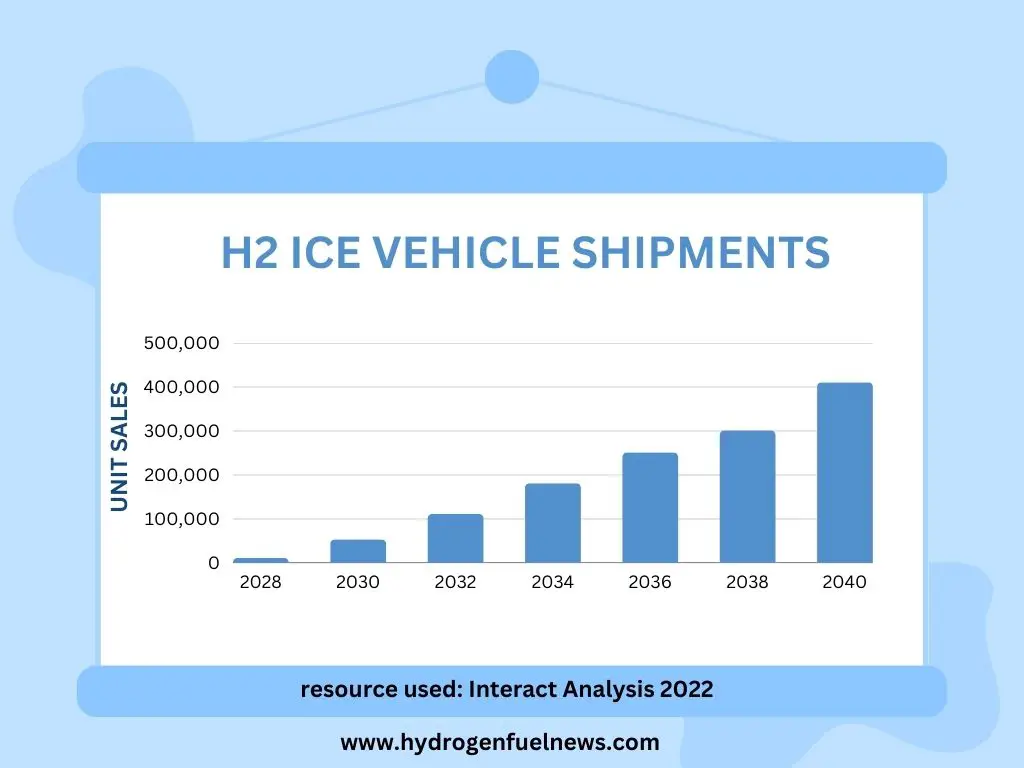
Are hydrogen ICE conversions the key to transitioning to H2 cars?
November 12, 2022Current H2-powered car models aren’t cheap, but conventional vehicles are convertible for less.
Climate and automotive experts are taking a second (and third) look at hydrogen ICE conversions as a potential option to help transition more quickly to H2-powered vehicles that will substantially reduce greenhouse gas (GHG) emissions produced on our roadways.
Converting an existing car is less expensive than purchasing a new H2 passenger vehicle.
There are nearly a billion and a half passenger cars on the road worldwide. Only a tiny percentage of those vehicles is zero-emission, meaning that in order to be able to cut back on their GHG production, a tremendous transition will be required. Currently, new electric and fuel cell vehicles are notably more expensive than those powered by gasoline and diesel fuel, making them cost prohibitive for the majority of people.
That said, a possibility does exist for retrofitting conventional gasoline-powered internal combustion engine cars into H2-powered vehicles. This involves hydrogen ICE conversions. This will not result in a GHG emission-free vehicle, but it will substantially reduce emissions. It will eliminate carbon dioxide emissions, though some nitrogen oxides are still emitted.
Clearly, this is not a perfect solution, as some emissions are still produced, and it does still cost money, but it offers an additional option to drivers, one that does not require the purchase of a new and expensive car, and one that will still notably cut back on GHG emissions.

Aside from hydrogen ICE conversions, early research is also developing alternative fuels.
Porsche is among the automakers seeking to lead the way in the development of alternative fuels – also known as efuels – so that drivers can continue to enjoy their favorite cars without polluting the air. The company has invested $75 million into a company called HIF from Chile, which as developed a method of synthetic liquid fuel creation that appears to be promising. The fuel can be used in existing traditional gasoline internal combustion engines. While it is not completely carbon emission free, the reduction is a substantial one.

Still, hydrogen ICE conversions have notable appeal in many niche automotive markets, such as in classic muscle cars. Ford, for instance, has a patent for direct injection of hydrogen to a car’s cylinders. This design makes it possible to give the cars the power they require for the same – or even better – performance, while also maintaining that rumble that enthusiasts love. At the same time, their operation remains essentially clean, keeping what the drivers love from the past, while moving forward into the future.

UPDATE: 6/12/23
Hydrogen-Powered ICE Vehicles Set for Remarkable Growth by 2030 Despite Current Challenges, According to Interact Analysis Research
Hydrogen-powered internal combustion engines (ICE) are on track for considerable growth within the next 17 years, as research from Interact Analysis projects a rapid increase in registered H2 ICE vehicles to 58,000 by 2030. This substantial expansion is likely to cover a variety of vehicle types, such as trains, agricultural equipment, trucks, and passenger cars, with shipments predicted to surpass 400,000 units by 2040. Although H2 ICE technology currently grapples with obstacles like elevated costs and insufficient refueling infrastructure, a significant reduction in hydrogen costs is expected in the future, potentially rendering hydrogen ICE vehicles more competitive across an array of applications.



 With over 15 years of reporting hydrogen news, we are your premier source for the latest updates and insights in hydrogen and renewable energy.
With over 15 years of reporting hydrogen news, we are your premier source for the latest updates and insights in hydrogen and renewable energy.
I’m wondering what the long-
term implications are regarding storage of waste byproduct’s?
After seeing (experiencing) the decades long problems at Hartford in my state. (Washington, USA),I’m extremely skeptical. But don’t know enough about it.
Sorry… waste byproducts of…? HFN have a great article on Green Hydrogen: https://www.hydrogenfuelnews.com/what-is-green-hydrogen/
The by-products of the Hydrogen electricity cycle are Heat, perfectly pure water (no impurities).
What’s more, if the H2 is produced by Solar PV, the process has other environmental benefits:
1) Solar PV ABSORBS Uktraviolets (UVs) in the sunlight spectrum, converting them into electricity, and so removes form the system a considerable source of HEAT that would otherwise be reflected as Infrareds (IRs) and so removing it form the heating equation
2) IF Solar PV panels are equipped with a water cooling grid on the reverse, they retain efficiency even in hot weather AND the hot water can be used just as in Solar Thermal systems, saving a considerable amount of energy for water/space heating
I would encourage you to read around the subject, I am sure you will find it fascinating.
Please send me your newsletters.
Thank you
Erwin Loibl
I develop H2ICE engines Small and large – including jet turbo engines running on 100% hydrogen – fuel management systems. You need to know more….
I think hydrogen cars will be better than electric cars because time is faster to fill up the tank, and hydrogen is like air producing gas, but electric cars need lots or solar power which I think is not fast enough. And imagine electric cars so slow to fill up, thousands of cars will be waiting at stations for their turn… maybe only the very rich can pump electric cars at their home.
Internal combustion (IC) engines of all types use air to provide the oxygen to oxidise (burn) the fuel and hydrogen is no different, which means that any IC engine will produce harmful nitrogen oxides (NOx) which can be partially removed by a urea based system (the blue liquid for diesels) so IC engines ought to stop being used to power NEW vehicles, but will be useful to extend the life of existing vehicles for a limited time, with the exception of historic classic vehicles given a special licence to use either hydrogen or sustainable fuels produced from atmospheric CO2 or from biomethane.
CNG makes more sense because no modifications to the engine are needed, but we do both systems for ICE. NOX is produced with both fuels and hydrogen is better because of the combustion speed. CNG is mostly methane and methane is mostly hydrogen, CH4 is methane so that means one carbon and four hydrogen makes the molecule. The absolute best fuel for our engines is a blend of hydrogen and methane we call Intergalactic Gas and no engine modifications are necessary to burn it. The emissions are very low, the power is increased a lot and mileage is too.
I built hydrogen generators and used the gas for a torch and gas to burn in a type of space heaters. The problem I never figured out was how to store the gas. My system was on demand o ly.
gas gas
Industry, like demographics, are healthiest when lots of diversity is in play.
Current admins push for ONLY electric vehicles is a sham.
Our global electric grid cannot sustain it. It barely keeps up with what we have.
I like the idea of electric cars but not for everyone. Need lots of alternative ICE type vehicle options available to give time for the infrastructure to develop and mature.
Let’s hear more about “Intergalactic Gas.” Any thoughts on the production process and its costs and storage?
Hello James, producing Intergalactic Gas is really easy. Hydrogen and Methane can be combined in any ratio, but lower H2 percent is best. Our vehicle can produce Intergalactic Gas in the vehicle because we have multiple compressed fuel tanks. Having Hydrogen in a tank allows us to add it to another tank when that tank is low, then that tank is filled with CNG. It is that easy. We have pressure gauges to monitor how much Hydrogen we add then just a normal fill of CNG at 3600 PSI makes the best fuel we have ever used in an engine. A few years ago Penn State used HCNG at 10 decent Hydrogen to fuel the bus fleet on campus. That was developed from Frank Lynche’s work and he called his blend Hythane. We visited the university and wanted to try his blend, but it took a different fueling nozzle that we didn’t have on my vehicle.
Spell check changed percent to decent and I didn’t notice before submission.
It seems that the great majority of people these days do not remember the gas and oil shortages during World War II. Many countries including Germany, Austria, Denmark, Sweden and even the United States utilized wood gas or coal gas to run internal combustion engines on cars, trucks, and even tanks.
The wood or coal gasification process produced primarily he hydrogen and carbon monoxide which are both combustible and provided approximately 70% of the energy of what gasoline would normally provide.
General Motors made 50,000 trucks here in the United States that had gasifiers built into them to provide the means of generating “gas” for the trucks to run on just using wood chips or coal.